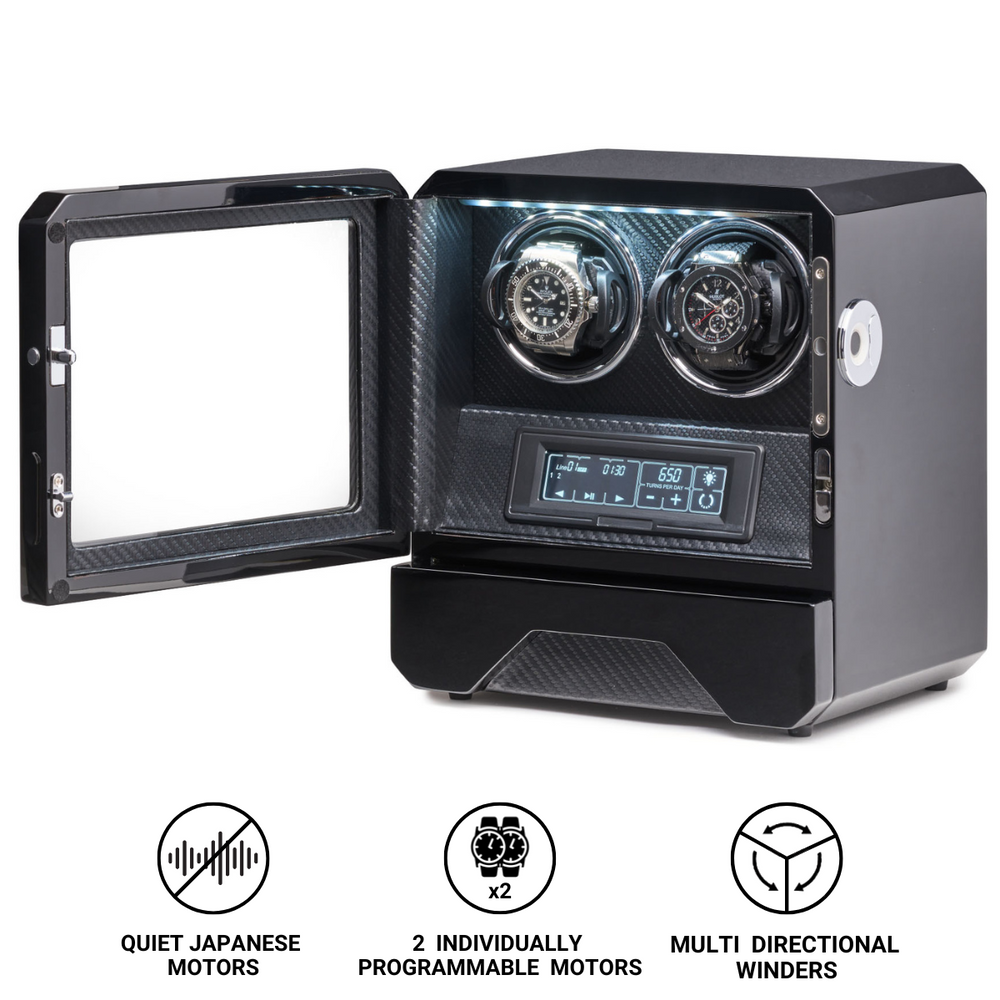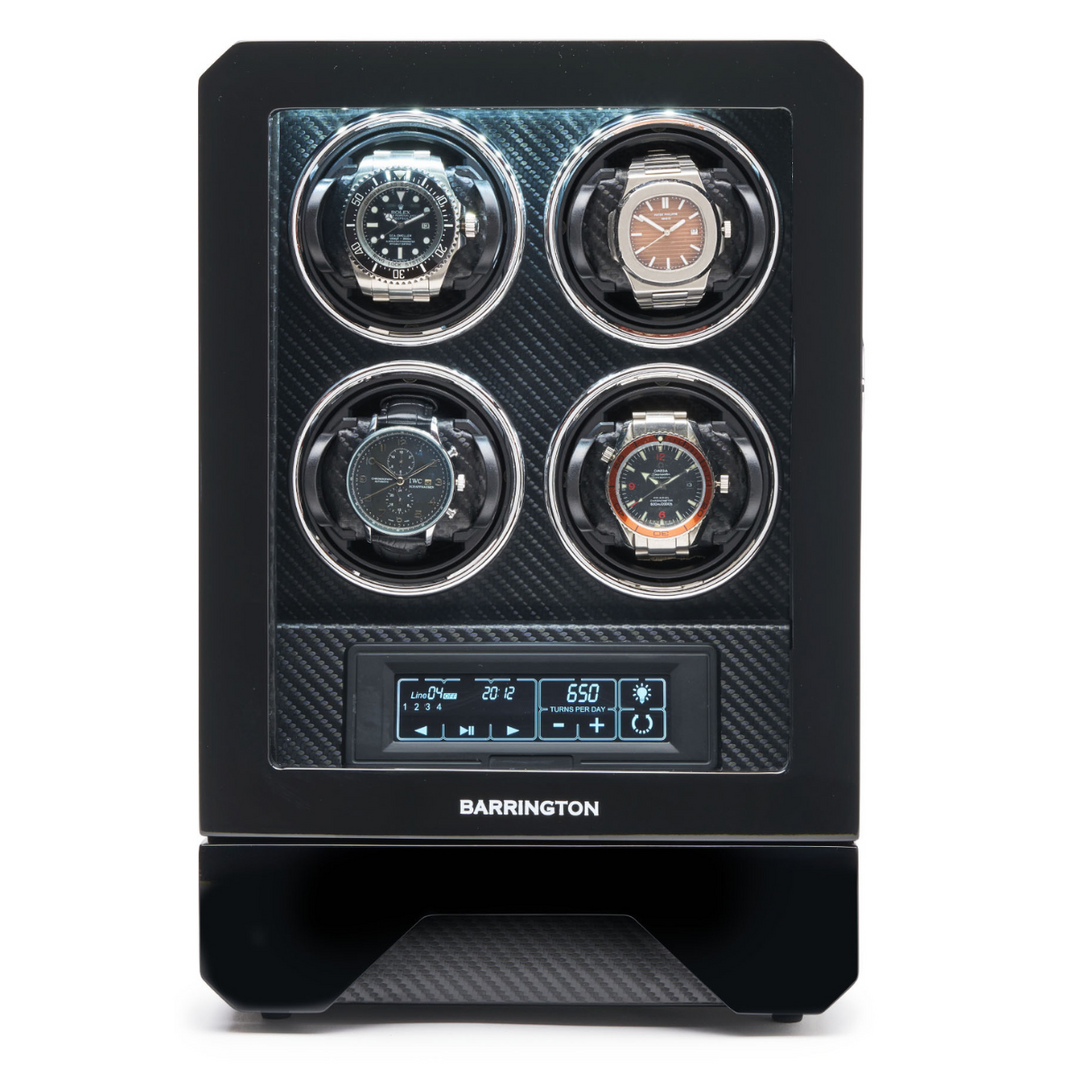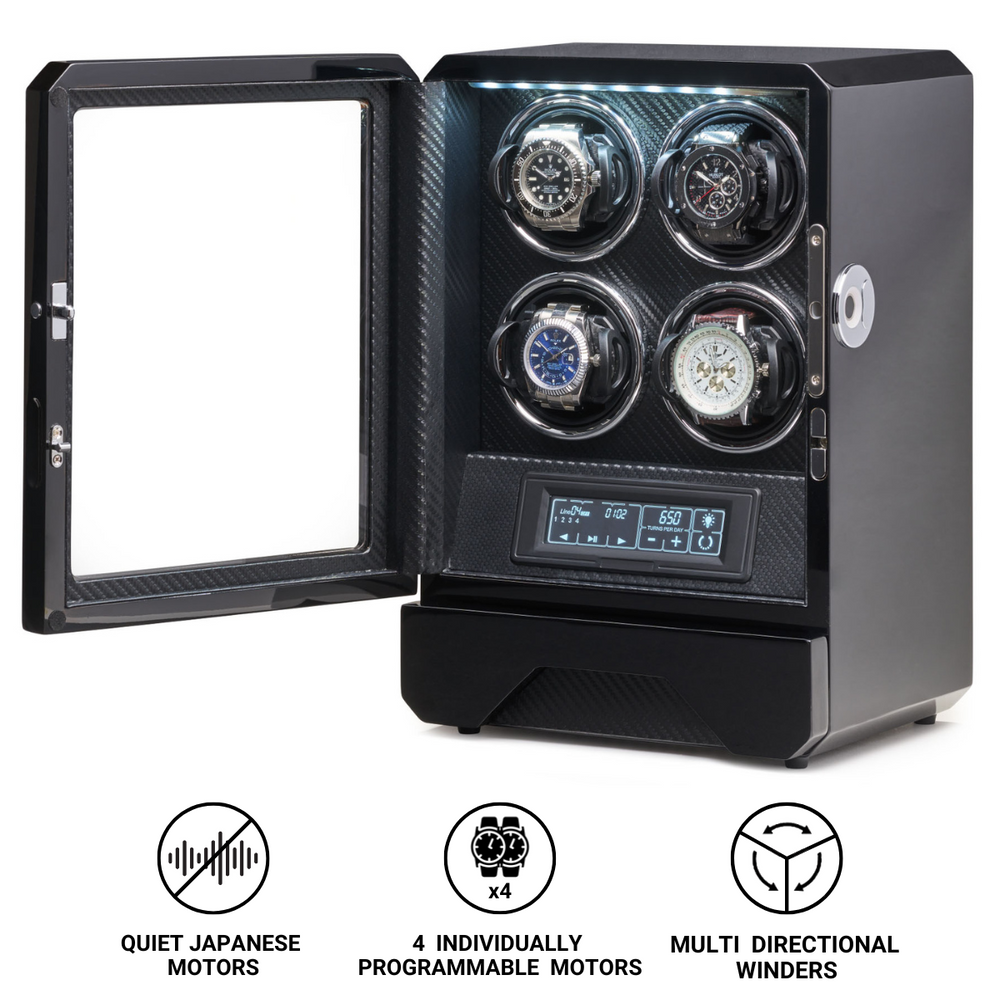What is Guilloché?
Among the most beautiful and intricate decorative techniques in horology, guilloché occupies a unique and revered position. This centuries-old craft involves engraving fine, repetitive patterns onto a surface, most commonly a watch dial, using a manually operated machine known as a rose engine or straight-line engine. The result is a mesmerising play of light and texture, where each line catches reflections differently, giving the dial a sense of depth, movement, and refinement.
Guilloché is not merely decoration. It is a mark of craftsmanship, precision, and tradition, representing the meeting point of mechanical skill and artistic expression. The technique continues to define the aesthetic identity of some of the world’s most distinguished watches, linking contemporary horology with its classical past.
The Origins of Guilloché
The word “guilloché” is derived from the French term guilloche, which refers to a repeating decorative pattern. The exact origins of the term are uncertain, though it is often attributed to the name of a French engineer, Guillot, who may have developed or refined the machine used for such work in the eighteenth century.
The technique itself, however, predates the term. The earliest examples of engine-turning can be traced to decorative arts in the seventeenth century, where craftsmen used similar mechanical tools to adorn precious objects such as jewellery, snuff boxes, and fine metalwork. The invention of the rose engine lathe allowed for far greater precision and complexity in pattern-making.
By the eighteenth century, guilloché had become a hallmark of European luxury craftsmanship. The technique was famously adopted by master artisans such as Peter Carl Fabergé, whose enamelled eggs incorporated exquisite guilloché patterns beneath layers of translucent enamel. Watchmakers soon recognised the same potential for beauty and detail on their dials and cases, and by the nineteenth century, guilloché had become a defining feature of high-end horology.
The Guilloché Technique
Guilloché engraving is performed using a rose engine or straight-line engine, both of which are precision mechanical devices operated entirely by hand. Despite appearing mechanical in nature, the process is profoundly artisanal, demanding years of training and an acute sense of touch.
-
The Rose Engine
The rose engine is used to create circular or radiating motifs, such as waves, spirals, or sunbursts. The workpiece, usually a thin metal disc, is mounted on a rotating spindle. A system of cams (the “roses”) beneath the spindle controls the oscillation of the cutting head as the operator turns the crank. The pattern’s depth and spacing are controlled manually, requiring extraordinary precision and rhythm. -
The Straight-Line Engine
This variation produces linear or geometric designs such as basket-weave or barleycorn patterns. Instead of rotating, the workpiece moves back and forth in straight lines under the cutting tool. The craftsman adjusts the spacing between lines to achieve the desired texture and complexity. -
The Finishing Process
Once the engraving is complete, the dial may be treated with lacquer, enamel, or galvanic coatings. Some manufacturers apply translucent enamel over guilloché surfaces, creating the famed flinqué effect, where the underlying pattern glows softly beneath the enamel’s sheen.
Each dial can take many hours, even days, to complete. No automation can replicate the tactile sensitivity of the human hand guiding the tool, and even minor variations contribute to the individuality of each piece.
Common Guilloché Patterns
Guilloché offers a nearly infinite range of designs, but several patterns have become emblematic in watchmaking. Each has its own distinct character and effect on light reflection.
-
Clous de Paris (Hobnail): A grid of tiny pyramid-like squares that catch the light with subtle sparkle, often used in classical dress watches.
-
Flamme (Flame Pattern): Radiating curves resembling tongues of flame, creating a dynamic, flowing visual effect.
-
Grain d’Orge (Barleycorn): Elongated oval shapes reminiscent of barley grains, commonly seen on traditional guilloché dials.
-
Sunburst or Ray Pattern: Lines radiating from a central point, evoking the brilliance of sunlight.
-
Wave and Moiré Patterns: Undulating designs that give a sense of movement, frequently used on marine or nautical-themed watches.
These motifs are not merely aesthetic choices but also reflections of the watchmaker’s identity. Many brands develop their own signature guilloché patterns, becoming part of their visual DNA.
The Role of Guilloché in Watch Design
In watchmaking, guilloché serves multiple purposes beyond decoration. It enhances legibility, defines structure, and adds a tactile quality that engages the wearer on a sensory level.
A well-executed guilloché dial plays with light in subtle ways, allowing certain areas to shimmer while others remain shadowed. This creates visual hierarchy, guiding the eye toward key indicators such as hour markers or sub-dials.
The technique also provides texture and contrast, often used to differentiate different sections of the dial. For example, a central guilloché medallion may be surrounded by a smooth chapter ring, or vice versa. This layering of surfaces contributes to the dial’s sense of depth and complexity.
Guilloché has become a hallmark of fine craftsmanship, often reserved for the most prestigious models in a collection. It signals that the watch was not merely manufactured but crafted, reflecting a lineage of artisanal skill that extends back centuries.
Brands and Masters of Guilloché
Several watchmakers have become synonymous with the art of guilloché, preserving and evolving the technique through modern craftsmanship.
-
Breguet: Perhaps the most famous advocate of guilloché in watchmaking. Abraham-Louis Breguet introduced the technique to his dials in the late eighteenth century, using engine-turning to enhance both beauty and legibility. Today, Breguet continues to use traditional rose engines, with patterns such as Clous de Paris and Panier defining its aesthetic identity.
-
Vacheron Constantin: Known for intricate dials featuring geometric and floral guilloché patterns, often combined with enamel or engraving.
-
Audemars Piguet: The Royal Oak’s “Tapisserie” pattern, though now machine-stamped, was inspired by traditional guilloché. Its raised grid texture has become one of the most recognisable designs in modern horology.
-
Blancpain and Jaeger-LeCoultre: These brands frequently employ guilloché in their high-complication models, particularly in limited editions where craftsmanship takes precedence.
-
Independent Watchmakers: Artisans such as Kari Voutilainen and Roger W. Smith continue to perform guilloché by hand, using restored antique lathes. Their work exemplifies the dedication required to preserve the purity of the technique in an age of industrial production.
Each of these names demonstrates that guilloché is not a relic of the past but a living craft, continuously reinterpreted by those who value artistry over efficiency.
The Revival of Guilloché in Contemporary Watchmaking
In recent years, there has been a notable resurgence of interest in traditional decorative crafts, including guilloché. As consumers increasingly seek authenticity and craftsmanship, many brands have returned to hand-engraved dials as a symbol of exclusivity and heritage.
Modern technology has also enabled new interpretations of guilloché. Computer-controlled lathes can now reproduce similar patterns with high precision, making the aesthetic more accessible. However, connoisseurs still distinguish between true, hand-turned guilloché and mechanically stamped imitations. The latter may look similar but lack the depth, irregularity, and warmth that come from human touch.
Some contemporary watchmakers experiment with unconventional materials and colours, applying guilloché to titanium, ceramic, or sapphire. Others combine the technique with enamel, skeletonisation, or gemstone setting to push artistic boundaries.
Despite these innovations, the essence of guilloché remains unchanged: a dialogue between machine and artisan, between precision and emotion.
The Symbolism and Emotional Resonance of Guilloché
The enduring appeal of guilloché lies in its ability to evoke emotion through geometry and light. The repetitive, harmonious patterns resonate with the human sense of order and beauty, while their subtle imperfections remind us of the handmade nature of the work.
Each engraved line is a trace of the artisan’s movement, a record of concentration and control. In this way, guilloché captures time not only as a measurement but as a creative process.
For collectors, a guilloché dial represents authenticity and refinement. It transforms a watch from a functional object into a piece of art, linking its mechanical precision with visual artistry. The shimmering patterns seem to breathe, responding to changes in light, angle, and motion. This interplay gives the dial an almost living quality, one that continues to fascinate long after the novelty of other design elements fades.
The Collector’s Appreciation
Collectors value guilloché for both its aesthetic and historical significance. The technique reflects an era when craftsmanship was a defining measure of quality. Watches featuring true hand-turned guilloché dials are often limited in production due to the time and skill required.
Factors influencing collectability include:
-
Authenticity: Hand-engraved guilloché is far rarer and more valuable than machine-stamped alternatives.
-
Complexity of Pattern: Intricate designs requiring multiple setups on the lathe demonstrate exceptional skill.
-
Condition and Preservation: Well-maintained guilloché dials retain their sharpness and reflectivity over decades.
-
Artistic Combination: Dials that pair guilloché with enamel, engraving, or gem-setting are highly sought after.
To own such a watch is to possess a small piece of living history, one that bridges mechanical ingenuity with artistic expression.
Conclusion
Guilloché stands as one of the purest expressions of artistry in horology. Born from the marriage of craftsmanship and precision engineering, it has graced the dials of some of the finest watches ever made.
From the workshops of eighteenth-century Europe to the ateliers of modern independent watchmakers, the technique has endured because it embodies timeless values: patience, skill, and beauty. Each engraved pattern is a testament to human ingenuity and the pursuit of perfection through imperfection.
In an age dominated by automation, guilloché reminds us of the value of the handmade, the tactile, and the authentic. It transforms the surface of a watch into something more profound—a canvas that captures both light and time, etched forever with the soul of its maker.









